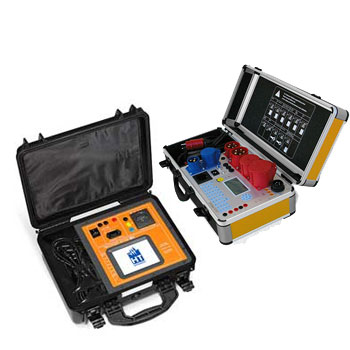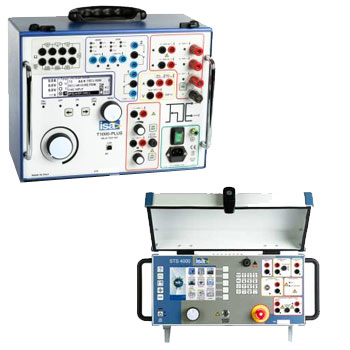- Connection: G1/4 left, G1/4 right, G1/2 left, G1/2 right
- PN in bar: 400, 600, 1000
- Material: Steel, CrNi-Steel
- DIN 16282
 Datasheet Datasheet
|

Weld-on Nozzles for Pressure Gauges – stable, permanently tight process connections
Weld-on nozzles for pressure gauges are welded directly to pipelines, vessels, or fittings and provide a rugged interface for pressure gauges, digital gauges, pressure switches, or shut-off/needle valves. Depending on the version, they feature external threads (e.g., G 1/4, G 1/2, 1/4" NPT, 1/2" NPT) or a plain stub to be combined with couplings/adapters. Variants in carbon steel, stainless steel 304/316(L), and special alloys cover a wide range of media and temperatures.
ICS Schneider Messtechnik supplies weld-on nozzles in standard lengths and diameters, optionally with EN 10204 3.1 material certificates, pickling/passivation (stainless steel), and pre-assembled sets (nozzle + valve/snubber + gauge) for fast, safe commissioning.
FAQ on Weld-on Nozzles for Pressure Gauges
Key points on selection, thread standards, materials, welding practice, pressure/temperature limits, hygienic/Ex use, and installation.
What is the difference between a weld-on nozzle and a weld-in socket?
| Feature | Weld-on nozzle | Weld-in socket |
|---|---|---|
| Typical connection | External thread or plain stub | Internal thread |
| Space requirement | Very compact | Slightly larger due to wall thickness |
| Use case | Direct device connection/adapter | Device screwed directly into socket |
Which thread standards are common?
| External thread | Standard | Note |
|---|---|---|
| G 1/4, G 1/2 | ISO 228 (BSPP, parallel) | Flat seal/O-ring on mating part |
| 1/4" NPT, 1/2" NPT | ASME B1.20.1 (taper) | Sealant/PTFE in the thread |
| M20×1.5 (optional) | ISO metric | For devices/adapters with metric ports |
Which material fits my medium?
Carbon steel for neutral media/moderate temperatures, 304/316(L) for corrosive environments, Duplex/Hastelloy® on request. Select sealing materials (PTFE, FKM, EPDM, FFKM) to suit medium and temperature.
What pressure and temperature ranges are realistic?
They depend on wall thickness, weld quality, material, and plant code (e.g., PED/ASME). For high pressure, provide sufficient wall thickness and weld-in length; define limits in project specifications.
What should I consider when welding?
- Joint prep (bevel, degrease), follow WPS/PQR, use qualified welders.
- Minimize distortion: tack welds, controlled heat input.
- For stainless: pickle/passivate after welding to restore corrosion resistance.
How do I position the nozzle correctly?
- Choose a low-turbulence zone; ensure representative measurement.
- Allow space for a siphon/cooling section on steam/hot media.
- Consider ergonomic viewing/servicing and tool access.
How do I avoid thread leaks?
For NPT: clean threads, PTFE tape applied in thread direction or approved sealant, tighten to spec. For G-threads, sealing is on the flat gasket/O-ring of the mating part; keep faces flat and burr-free.
Is the nozzle suitable for hygienic service?
For food/pharma, use hygienic nozzles/connections (Tri-Clamp/Varivent®) or low-dead-space geometries with low roughness and FDA/EU-compliant gaskets. Classic nozzles are primarily for utility/process duty.
Anything special for hazardous (Ex) areas?
Ensure bonding/grounding and avoid ignition sources. For electrical devices (e.g., contact gauges) use appropriate Ex barriers/isolators and follow approvals.
Which tests do you recommend?
- Pressure/leak test of the weld and threaded joint
- Optional NDT (VT/PT/RT) per project specification
- EN 10204 3.1 material certificates on request
Which sealing materials are common?
| Seal | Typical temperature range | Properties |
|---|---|---|
| PTFE | −60…+250 °C | Very high chemical resistance |
| FKM | −20…+200 °C | Resistant to oils/chemicals |
| EPDM | −40…+150 °C | Excellent for aqueous media |
| FFKM | −20…+260 °C | Maximum chemical/temperature resistance |
How do I combine the nozzle with accessories?
Combine with shut-off/needle valves, snubber/restrictor, siphon, or diaphragm seal as required. This improves shock damping, protects the instrument, and increases serviceability.
Do you offer pre-assembled sets & documentation?
Yes. We supply ready-to-install units (weld-on nozzle + valve/snubber + gauge) including test report, material certificates, and—if required—project-specific tagging.











































































































































































